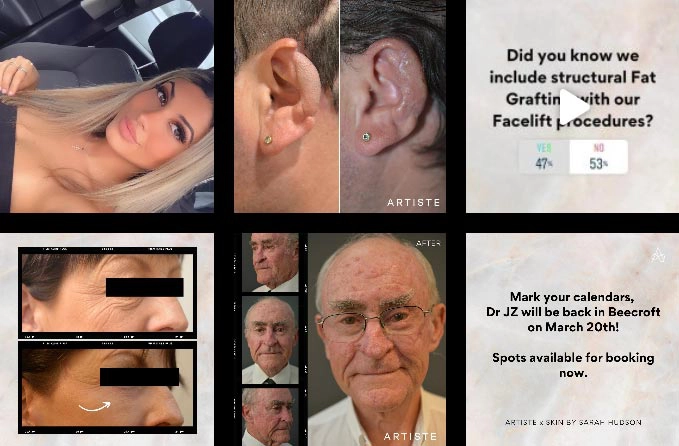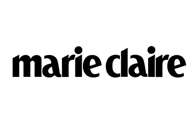How Effective Is Fat Transfer?
Model featured in photography
Fat transfer is one of the most popular cosmetic procedures because it is essentially two procedures in one: fat is liposuctioned from one area of the body where it is not needed and then injected into another area for augmentation. This procedure has been practiced for more than 30 years, and new techniques are constantly arising to make it even more effective, but just how effective is it?
Much like skin grafting, fat grafting must gain a blood supply from the recipient area to provide lasting results. Statistics have shown that, in general, about 40 to 70 percent of transferred fat cells will survive while the rest are naturally absorbed by the body. There are many factors that contribute to the success of fat survival and longevity:
1. Area Treated
Some areas of the face are more receptive to fat transfer than others. On the face, the majority of patients need only one session of fat transfer to the cheeks to get long-lasting results. Many surgeons find that transferring fat to areas that move often, like around the mouth, either need a second treatment or would benefit more from facial fillers. Areas that do not have much fat, like the chin and the tip of the nose, are not very receptive to fat transfer and don’t always produce the best results.
A general rule that many surgeons follow is that grafts made of the material to be replaced are the most effective: bone should replace bone, fat should replace fat, and cartilage should replace cartilage. During rhinoplasty, tissue grafts from other areas of the body can be taken to provide a viable option for augmentation or nose reshaping. Chin implants are very similar to the natural tissues and structure of the chin and may be a better option than fat transfer for chin augmentation.
2. Surgical Technique
Since the fat that is removed from the body must survive in order to serve its purpose for augmentation, it must be removed and injected as delicately as possible. There are many different approaches, which may be more or less effective depending on the body’s response. Some surgeons find that using smaller cannulas during the liposuction portion of surgery removes the fat cells more gently and that injecting them into either the deeper muscle layers or just beneath the surface of the skin is more or less effective. Surgeons will often over-inject in the area to produce lasting results without the need for a second treatment.
3. Your Surgeon
Because of all the techniques available, the best results with fat transfer are also highly dependent on the surgeon you choose. A surgeon who has many years of experience with fat transfer will always be a better choice than a surgeon who does not. When choosing a fat transfer surgeon, patients should look for a high number of years of experience, a concentration in the area of the body you are considering having treated, and before and after photos of their work. Dr. Jack Zoumaras has chosen the face as his area of expertise and has 14 years of experience and specialized training from world leaders in facelift surgery and facial aesthetics. During your consultation, he can show you before and after photos of many of his satisfied patients.
To schedule your fat transfer consultation with Dr. Jack Zoumaras, please call (02) 9327 1700 or fill out our online contact form for more information.
Disclaimer: At Artiste Plastic Surgery, our Plastic Surgeons led by Dr Jack Zoumaras have been trained to the highest possible degree. All surgery has risks and it is always advised to get a second opinion. Risks are very real and we cannot guarantee any result. Results are illustrated as a guide only. All risks are managed and any need for revision surgery or complications (1-5%) can be managed by our specialist plastic surgeons.
Any statements on how you will feel is based on Level V Evidence:
Level V: How you will feel after plastic surgery varies between individuals, depending on psychological and physical factors. Our internal research is based on how patients in our practice feel after surgery.
The blogs are not a substitute for a medical consultation and do not form as part of the doctor to patient relationship.
SHARE THIS ARTICLE
Apr18
6 Key Factors to Consider When Choosing A Surgeon for Eyelid Surgery
Eyelid surgery or blepharoplasty might just be the thing to help you feel more refreshed and confident about your appearance. But with so many surgeons available, how do you find ...
READ MORE
Apr18
Why is Double Eyelid Surgery Popular?
The impact of Western beauty standards has become so far-reaching that double eyelids have become a desirable feature among Asians. The first recorded procedure of a double eyelid surgery being ...
READ MORE
ABOUT ARTISTE
Artiste Plastic Surgery is an Award Winning Specialist Plastic Surgery practice led by internationally trained Dr. Jack Zoumaras, Plastic Surgeon and Peer Reviewed Face Surgeon
Artiste offers the latest Cosmetic Surgical Procedures of the Face, Breast and Body, inspired from leading centres around the world.
STAY IN THE LOOP
Enter your email address below to receive updates on new articles and VIP access to promotions and special offers.
FOLLOW US ON INSTAGRAM








